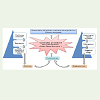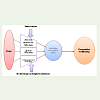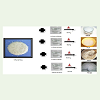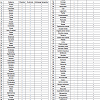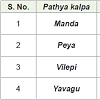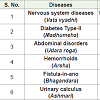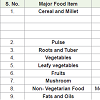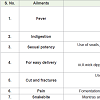Review Article
Worthy Diet and Dosage Forms in Decree on Diseases for Healthy Days: A Doctrine of Ardour
Ashutosh Pandey*, Shakti Bhushan and Anand Chaudhary
Department of Rasa Shastra, Faculty of Ayurveda, Institute of Medical Sciences, Banaras Hindu University, Varanasi
Corresponding author: Ashutosh Pandey, Department of Rasa Shastra, Faculty of Ayurveda, Institute of Medical Sciences, Banaras Hindu University, Varanasi, Tel: +918600759488; E-mail: pandeyashu760@gmail.com
Citation: Pandey A, Bhushan S, Chaudhary A. Worthy Diet and Dosage Forms in Decree on Diseases for Healthy Days: A Doctrine of Ardour. Indian J Nutri. 2017;4(3): 166.
Copyright © 2017 Pandey A, et al.This is an open access article distributed under the Creative Commons Attribution License, which permits unrestricted use, distribution, and reproduction in any medium, provided the original work is properly cited.
Indian Journal of Nutrition | ISSN: 2395-2326 | Volume: 4, Issue: 3
Submission:15/06/2017; Accepted: 03/07/2017; Published: 17/07/2017
Abstract
The role of diet regimes in preventive and curative aspects is one of the ancient Indian pre-medicated nutraceutical practices (Pathya kalpana-Ayuceutical) of Ayurveda since thousands of years. Numerous pharmaceutical procedures (Samskara) applied on raw food items to enrich the nutritional value, maintains the Doshas (Specific provocated humours), Dhatus (basic elements) in a well balanced condition. Pathya kalpana endorses the homeostatic stability of cellular metabolites (Dhatus) to maintain health and avert for ailments. Thus, pathya as adjuvant used with the therapies aid to renovate the cellular mechano-bio equilibrium. In tribal community, food items are prepared from rice, maize, millets etc. ingredients in their ritual just similar to the Pathya kalpana regimen. Present era is familiar to the benefits of nutraceuticals, medicinal food and functional foods etc are also the advance forms of ancient nutritics. To deal up with this, literature related to Pathya kalpana has been surveyed from Vedic period till recent era publications and presented concisely here. The basic objective of this review paper is to amalgamate the traditional and tribal knowledge of diet with therapeutic utility with contemporary products known as functional and edicinal food. After going through this fundamental information’s, any keen interested person or researcher may pave a direction to further reinforce this ancient nutraceutical dosage form.
Keywords:
Pathya kalpana-Ayuceutical; Cellular metabolites (Dhatus); Nutraceuticals
Introduction
Diet is being focused now days as a proactive medication fordisease cure and treatment. To promote and maintain well-being and nice-being condition, rather than to prevent diseases possible onset, wholesome diet and lifestyle are essential and globally recognized. Pathological conditions are being determined by improper dietary routine and standard of living. To lesser the hazard of lifestyle related disorders and to assure the efficient pre-medical medication with suitable therapeutic benefits, prevention is the correct tool [1].
Vaidyajeevanam (An ayurvedic treatise) quotes the prescription of nutritious diet in a pre-medicated way requires no further prophylactic nutrition while the treatment becomes questionable if insubstantial diet is accepted [2]. “Dietary health treatment Patha isan abstraction from the word of mouth: “(Vaidya Vivaanam 1:10).
Concept behind the preventive aspect of dietetics is to maintain wellbeing as well as to treat disease by maintaining the bio mechanism of the body. Thus the specifically planned and prepared food is called Pathya [3].
After on examining the individual body genomics (Prakriti), various definite formulations of rice gruel with different consistencies can be advocated. The ingredients suggested should be simply obtainable, easy to prepare by simple ingredients like Rice (Oryza sativa), Green gram (Phaseolus mungo) etc. Therefore the ayurvedic community relies on this unique preventive dietary pattern, ie, Pathya kalpana (rice gruel with various proportions) as a therapeutic intervention [4].
Implication of Pathya Kalpana
Evolutionary development
Chronologically, processing of Ahar (food) is developed from Vedic period to till date. Literature reveals the following points;
Vedic period: Rig-veda states that, Man (Purusha) is the regulator of Soul (Atma) and marked by Food (Anna) [5]. In Taittiriya Upanishad, the food has been considered as ‘Brahma’, as all living beings are formed from Anna, existence is sustained by anna and at the end absorbed in the anna [6]. In Bhagavad Gita also diet has been established as a source for formation of life [7]. To attain achievement in yogic practices, there is comprehensible importance on suitable diet, along with other actions and routine of life [8].
The major classics of ayurveda (Brhat Trayi): Charaka Samhita states that the origin of Man (Purusha) and his ailments, the final statement to recognize the ‘Diet (Ahar)’ as a contributory issue for both, bears the historical significance of dietetics [9]. Sushruta Samhita refers the meticulous explanation of dietetics by Lord Dhanwantari considering the validity and value of diet in human life is self enough to verify the chronological implication of it [10].
In Brhat trayi, Sutrasthana of the entire classical book illustrates various sets of food items (Ahar Varga) as Kritanna Varga (Approximately 60 Ahar kalpana in each). The chronological advancement in the pharmaceutics of Ahar kalpana is for cure and prevention. Without therapeutic processing (kalpana), Shooka Dhanya (cereal grains), Shami Dhanya (legumes), Mansa (meat) and Shaaka (vegetables) desired therapeutic potential cannot be achieved.
Ahar and Aushadh (Food & Medicine)
Ahar
Charaka explains that Ahar upholds the homeostatic stability of cellular metabolites (Dhatus) to sustain health and averts from ailments [11]. As per Sushruta, Ahar renovates the potency, increases the life-expectancy, delight, memory, strength, ojas and digestion [12].
Contemporary and ayurvedic science approach towards ahar (food)
In contemporary dietetics, the food is analyzed by three basic contents as - Carbohydrates, fats & proteins, which completes the daily fixed quota of calories and counts everything on the dominance of basic constituents. So stress is on the nature of the food article (Dravya).
Ayurveda weighs the assets of food depending upon character of the food, digestive competence and the magnitude as per the appetite of the patient (strength of digestive capability) [13].
Contemporary science considers pulses as high quality source of proteins with diverse varieties of amino acid in different type of pulses. Similarly the nutritious value of pulses is incorporated in ayurvedic classics too with some uniqueness. Eg: Masha (Phaseolus radiatus) is more complex to digest than Mudga (Phaseolus mungo) [14].
Varieties of Food
Different database (Cochrane Library, Web of Science, CAS,EMBASE, Pubmed, Medline, Pubchem, Scopus, etc.) have been usedto search the varieties of food as adjuvant or as therapeutic potentiatordescribed below:-
Functional food
Functional food is an ordinary food that has ingredients added to give it a specific medical or physiological benefit, other than a purely nutritional effect and these are designed to allow consumers to eat enriched foods close to their natural state, rather than by taking dietary supplements manufactured in liquid or capsule form [15].
Medical food
The FDA considers medical foods to be “formulated to be consumed or administered internally under the supervision of a physician and which is intended for the specific dietary management of a disease or condition for which distinctive nutritional requirements, on the basis of recognized scientific principles, are established by medical evaluation.” Medical foods aren’t available as an over-the-counter product to consumers and designed to meet certain nutritional requirements for people diagnosed with specific illnesses [16,17]. Nutraceuticals and supplements do not meet these requirements and are not classified as medical foods.
Dietary supplements
The Dietary Supplement Health and Education Act (DSHEA) of 1994 defined that “A dietary supplement is a product taken by mouth that contains a “dietary ingredient” intended to supplement the diet. The “dietary ingredients” in these products may include: vitamins, minerals, herbs or other botanicals, amino acids and substances such as enzymes, organ tissues, glandular and metabolites. It can also be extracts or concentrates, and may be found in many forms such as tablets, capsules, soft gels, gel caps, liquids or powders. ”Dietary supplements do not have to be approved by the U.S. Food and Drug Administration (FDA) before marketing. This product is not intended to diagnose, treat, cure or prevent any disease [18].
Nutraceuticals
It is a blending of the words “Nutrition” (healthful food) and “Pharmaceutical” (with reference to a drug). Defined as, “a food or part of a food, which can be of vegetal or animal origin that provides, benefits health in addition to its nutritional content”. It is observed as the bio active ingredients, either way extracted from plants (phytocomplexes) or of animal origin, when extracted, concentrated and administered in a suitable pharmaceutical form, can create a very promising toolbox to avoid and/or enhance the therapy of some pathologic conditions given their proven therapeutic potency.
Numerous studies have been investigated for the cure or prevention of various diseases; some of them are given here: Berberine, extracted from Coptis root (dried root and rhizome of Coptis trifolia) and Phellodendron amurense (a tree belonging to the Rutaceae family), has been frequently used for the adjuvant treatment of type 2 diabetes mellitus, hyperlipidemia and hypertension [19].
Garlic also contains vitamin B6 and B12 flavonoids, lectins and N-fructosyl-amino acids, which may contribute, along with organo-sulfur compounds, to the biological effects in preventing cardiovascular diseases [20].
Presently, India accounts for less than 10% market share in nutraceutical market globally that is predicted to scale up to $250 billion industry by 2018. The overall industry is growing annually at the rate of 7% where India holds the individual annual growth rate of around 20% which also reflects to incur tremendous amount of opportunities [21] (Figures 1,2).
Ayurvedic Pathya as medication
“Let food be thy medicine” as proclaimed by Hippocrates (father of Western medicine), suggests the remedial property of food. Foods if used judicially can cure and avert the disease as reported by some of the great civilizations of ancient times (Indians, Egyptians and Chinese etc) [22] (Figure 3).
Various Pharmaceutical procedures (Samskara) applied on Dietary preparations (Pathya) keep the Doshas (Specific provocated humours), Dhatus (basic elements) in a well balanced condition. Pathya as adjuvant used with the therapies aid to renovate the cellular mechano-bio equilibrium.
Effectiveness of Pathya Kalpana in some Major Diseases
Qualities and medicinal use of each and every food article as per the classical texts of Ayurveda is mentioned below in detail:
Food culture in tribal
Among the tribal in Jharkhand, Bihar, Rajasthan, Odisha, Chhattisgarh and Madhya Pradesh, the principal foods are rice, maize, millet, seasonal fruits including ragi gruel and specially “Madia Paje-a concocted material” made from grounded rice and millets by kept overnight for fermentation, after steaming vegetables, cereals, fish are mixed to buildup flavor [25].
Tribal medicine
The various tribal medical practices (for disease cure and prevention) depending upon herbal, mineral and animal matters existing as a healing ritual since time immemorial. Many tribal traditions are expertise in terms of the medicines they use; the methodology they follow in determining the medicinal uses of plant, animal species and some of the customs they follow when collecting medicinal plants.
One of the studies during 1994-1998 in the Chittoor, Andhra Pradesh, more than thousand therapies and 500 medicinal plants were reported by HFRC (Herbal Folklore Research Center). Among the tribal bodily ailments are divided into two classes: (1) Associated to the body and (2) Connected to intellect and celestial supremacy. The physical disorders are cured with herbal medicines, coupled with animal parts and psychosomatic disorders by magico-religious practices coupled with herbal medicines (potions) [26].
Discussion
Food works as medicines if taken properly in accordance of individual human body. This fact was well recognized by Acharya of Ayurveda therefore in their treatment plan different kinds of foods became integral part of management of disease. For every set of diseases, Ayurvedic physicians are advocating food to synergize restorative effect of main medicines prescribed to patients. Pharmaceutical procedures (Samskara) therapeutically enrich the diet and create the various dietary preparations (Pathya). This remedial potentiation in food is known as Pathya kalpana, an essential concept in clinical practice. Significance of Pathya kalpana is that, these preparations are made up from easily available ingredients, simple methods of preparation and very cost effective. These points are depicted in tables of text (Tables 1-5).
Table 2: Therapeutics of Major Pathya Kalpana: [23].
Table 3: Effect of Pathya kalpana in some major diseases: [24].
Ayurvedic principles surely play an important role in the prevention and management of Non-Communicable Diseases (NCDs) such as lifestyle related disorders (diabetes, mental illness, cardiac diseases, cancer etc.). Health-promoting regime (Pathya) is the hall mark of Ayurvedic therapeutics; specific diet and lifestyle guidelines are always prescribed along with the medicines to facilitate restoration of cellular mechano-bio equilibrium (Dhatu-samyata). Theory of Pathya changes with every human being. What is congenial to one person may not be congenial to another. It varies due to various components like Age-psychological condition, habits of the patient,condition of Dosha, Dhatus and geographical area of the patient etc.
In contemporary knowledge system, modern society is familiar to the benefits of nutraceutical, medicinal foods and functional foods etc. Researchers have established objectivity of these different varieties of foods cum therapeutic substances even in significant chronic diseases of gastro intestinal origin, cardio vascular system and in radiation therapy of solid mass cancers.
Some time it is beyond believe that how tribes maintain their unique health status. Close analytical looks of their dietary habits have answer of these questions. Their diets are full of substances of therapeutic values. There preparatory methods are those which are suitable for substantiation and fortification of beneficial material of nature. Many projects are under pipeline to understand their survival and stamina to live in odd atmospheric conditions.
A blending of traditional and tribal knowledge of diet with therapeutic importance with contemporary products known as functional and medicinal food is basic objectives of this review paper.
Therefore, importance on diet arrangement based on Ayurvedic principles would definitely help in health promotion, prevention and management of diseases.
We tried to provide all information of nutraceutical values prevailing in different era of Ayurvedic literature, Folklore practices, and recent advancement at one point in best service of humanity.
So the major challenge was to elicit the actual quantity of food consumed and nutrient intake of the pregnant women which had a huge bearing on the accuracy of the dietary intake assessment.
Conclusion
The dietary preparations are more balanced and provide all the nutrients which help in allaying the diseases. Moreover the condiments used in Pathya kalpa have been described as curative of various diseases. Hence one can consume various preparations according to the need. The whole world is turning to the nature for promotion of health as well as cure of the diseases. Ayurveda having a rich knowledge pertaining to the dietetics can contribute promising attributes for the restoration of health through prophylactic and interventional dietetics.
Acknowledgement
Authors are very much thankful for the prestigious platform of Banaras Hindu University to complete our work.
References
- Maddi VS, Aragade PD, Digge VG, Nitalikar MN (2007) Importance of nutraceuticals in health management. Pharmacogn Rev 1: 377-379.
- Vasant D. Lad (2002) Textbook of Ayurveda: Fundamental principles of Ayurveda, (Volume 1). The Ayurvedic press, Albuquerque, New Mexico, pp. 334.
- Sharma H (2004) Vruddha jeevaka kashyap samhita Khilasthana, (9thedn).
- Sharma PV (2005) Charak samhita of Agnivesha Sutrasthana, (9thedn), Chaukhamba Orientalia, Varanasi.
- Mee JL, Stutzer V, Cerro GD (2004) Hymns of the Rig-veda. Jain Publishing Company, Fremont, California, pp.199.
- Sharvananda S (1921) Taittiriya Upanishad. The Ramkrishna Math Publications, Mylapore, Madras.
- Menon R (2009) Srimad Bhagavad Gita. Rupa & Company, pp. 338.
- Sastri WL (2009) Srimad bhagavad gita. Shri Lal Bahadur Shastri Rashtriya Sanskrit Vidyapeetha (Deemed University), New Delhi.
- Sharma PV (2005) Charaka Samhita of Agnivesha Sutrasthana, (9thedn), Chaukhamba Orientalia, Varanasi.
- Shastri A (2010) Sushrut samhita sutrasthana. Chaukhambha sanskrit sansthan, Varanasi.
- Sharma PV (2005) Charaka samhita of Agnivesha Sutrasthana, (9thedn), Chaukhamba Orientalia, Varanasi.
- Shastri A (2010) Sushrut samhita chikitsa sthana. Chaukhambha Sanskrit sansthan, Varanasi.
- Shastri K, Chaturvedi G (2008) Charak samhita Kalpa sthana. Chaukambha bharati academy, Varanasi.
- Shastri K, Chaturvedi G (2008) Charak samhita. Chaukambha bharati academy, Varanasi. pp.104.
- Hu FB, Willett WC (2002) Optimal diets for prevention of coronary heart disease. JAMA. 288: 2569-2578.
- Houston MC (2005) Nutraceuticals, vitamins, antioxidants and minerals in the prevention and treatment of hypertension. Prog Cardiovasc Dis 47: 396-449.
- Thanopolou E, Baltayiannis N, Lykogianni V (2006) Nutritional aspects regarding lung cancer chemoprevention. J BUON 11: 7-20.
- Temple NJ, Gladwin KK (2003) Fruits, vegetables and the prevention of cancer: research challenges. Nutrition 19: 467-470.
- Lan J, Zhao Y, Dong F, Yan Z, Zheng W, et al. (2015) Meta-analysis of the effect and safety of berberine in the treatment of type 2 diabetes mellitus, hyper lipedimia and hypertension. J. Ethnopharmacol 161: 69-81.
- Charu K, Yogita S, Sonali S (2014) Nutraceutical potential of organosulfur compounds in fresh garlic and garlic preparations. Int J Pharm Bio Sci 5: B112-B126.
- Khan HA (2016) Nutraceutical market to touch $250 billion by 2018.
- Eskin NAM, Tamir S (2006) Dictionary of Nutraceuticals and Functional Foods. Boca Raton CRC Press pp. 8.
- Srikanta Murthy KR (1995) Sharangdhar samhita, (2ndedn), Chaukhambha Oreintellia, New Delhi.
- Tripathi B (1997) Charak samhita. Chaukhambha publication, Varanasi.
- Sinha AK (2014) Nutritional security along with Food security: A major need in tribal areas. Asian Mirror- International Journal of Research. 1: 1-14.
- Vedavathy S (2002) Tribal medicine - the real alternative. Indian Journal of Traditional Knowledge 25-31.

